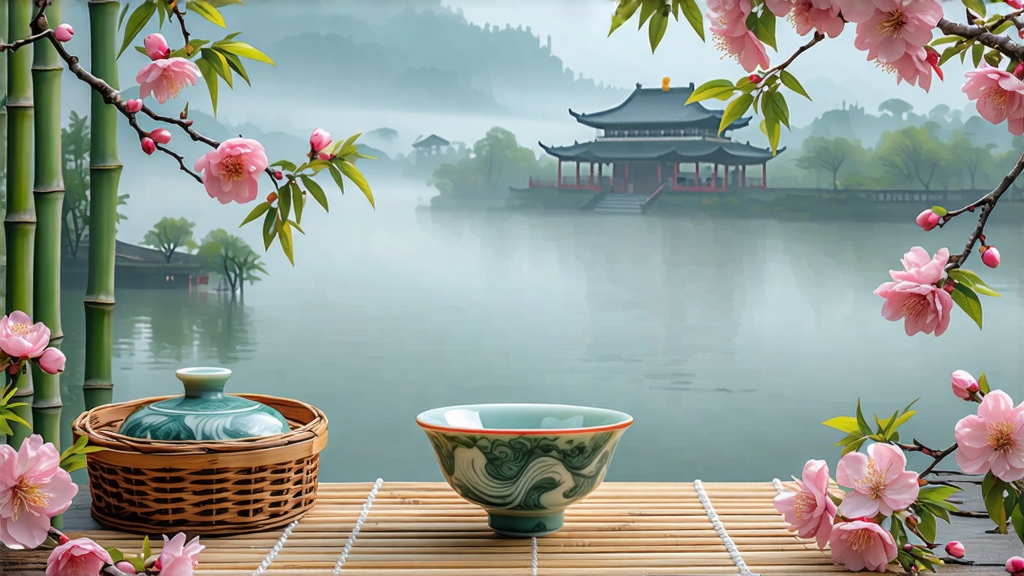
Biluochun, whose name literally means “Green Snail Spring,” is one of China’s ten most celebrated teas, yet it remains a delicate secret outside the circles of serious tea lovers. Produced exclusively in the mist-locked hills that rim eastern Taihu Lake in Jiangsu Province, this tea is so tiny, so fragrant, and so labor-intensive that connoisseurs often rank it above the better-known Dragon Well. To understand Biluochun is to listen to a soft spring whisper that has been echoing since the late Tang dynasty, carried on cool lake vapors and the perfume of interplanted fruit trees.
Historical records first mention the tea under the sobriquet “Xia Sha Ren Xiang”—“Scary-fragrant of Summer”—because its perfume was said to startle palace ladies who had never encountered anything so arrestingly floral. The Kangxi Emperor, touring the region in 1699, found the name vulgar and rechristened it Biluochun, celebrating both its spiral shape and the season of its plucking. From that moment the tea became a tribute item, shipped northward in small bamboo caskets sealed with lotus leaves and Taihu clay.
Strictly defined, authentic Biluochun comes from only two micro-zones: Dongting East Mountain and Dongting West Mountain, two peninsulas that push into Taihu like the pincers of a jade crab. Within these zones, the cultivars must be either the local “Xiao Ye” small-leaf landrace or the recently selected clone “Dongting Small-leaf #7,” both prized for low bitterness and high aromatics. Anything grown outside this terroir, even if crafted identically, is classified as “Taihu Green Curl” and lacks the protected-origin status granted by China’s Ministry of Agriculture.
Plucking begins when the lake’s night temperature lingers around 8 °C and the day’s first peach blossoms open, usually between the Qingming and Grain Rain solar terms. Only the top bud plus the immediate unfolding leaf are taken, a standard called “single bud with one leaf just showing its flag.” Experienced pickers work with thumb and index finger in a snapping motion that breaks the stem without squeezing the cell walls, thus preventing premature oxidation. On a good morning, a picker gathers barely 500 grams of fresh leaf, which will shrink to 100 grams of finished tea after the arduous seven-step craft.
The making of Biluochun is a ballet of heat, pressure, and timing. First comes withering: the leaves are spread on bamboo trays set under shade cloth for two hours, allowing surface moisture to evaporate while internal enzymes awaken. Next is fixation, performed on a cast-iron pan heated to 180 °C. The tea master tosses the leaves with bare hands, a skill that demands calloused palms and an intuitive feel for the “bead of sweat” that forms on each bud when the chlorophyll is flash-set. After three minutes the temperature is dropped to 120 °C and the rolling phase begins. Here the master’s fingers form a loose cage, coaxing the buds into tight spirals while the leaf margins bruise just enough to release fragrant compounds. A unique sub-step called “ti hao” (lifting the down) occurs midway: the leaves are gently shaken in the air so that the silvery pekoe stands erect, giving the finished tea its frosted appearance. Final drying is done in three short bursts of 60 °C, each lasting no more than forty seconds, locking in the signature scent of peach, narcissus, and fresh water chestnut.
To brew Biluochun properly, one must respect its fragility. Use a tall, thin-walled glass or a porcelain gaiwan of 150 ml capacity; metal will flatten the aromatics. Water should be drawn from the same Taihu watershed if possible—its softness accentuates the tea’s sweetness—but any low-TDS spring water filtered through activated carbon is acceptable. Heat the water to 75 °C, just when the first columns of steam rise like silk threads. Weigh three grams of tea, about forty buds, and let them slide down the inner wall of the glass so that the spirals land vertically. Pour the water in a slow arc, wetting the buds without agitating them. Within thirty seconds the tiny curls unfurl, a process Chinese poets call “dancing of the green snail.” Steep for forty-five seconds, then decant through a fine mesh to prevent the down from floating in the cup. The liquor should be the color of early morning mountain mist—pale chartreuse with a platinum shimmer